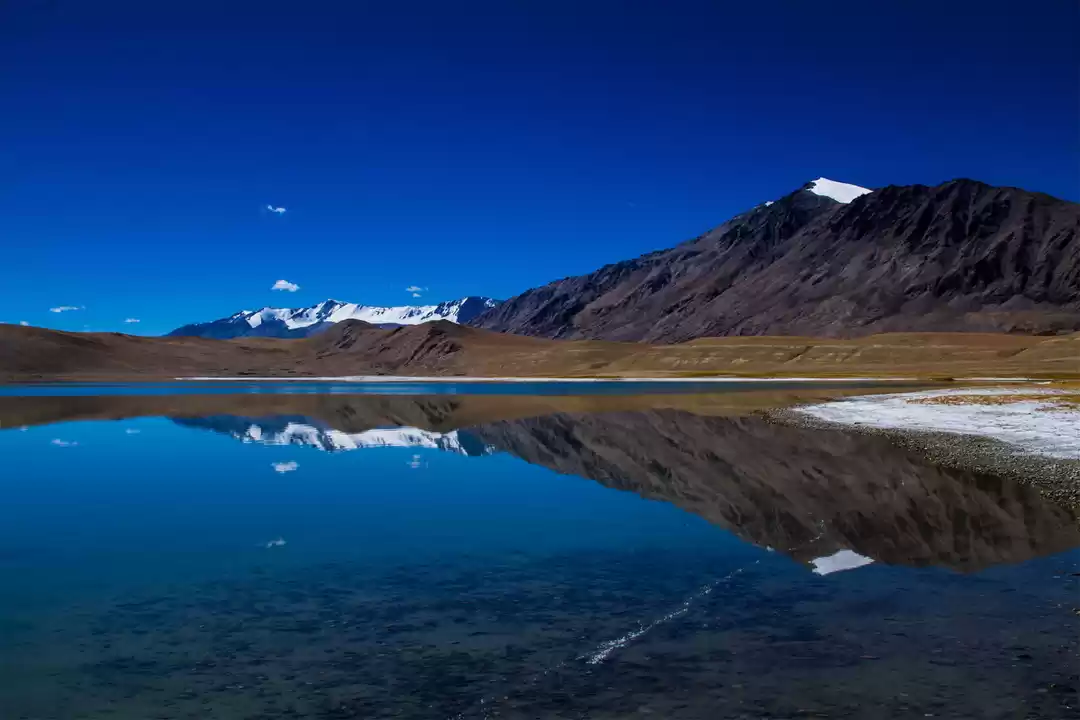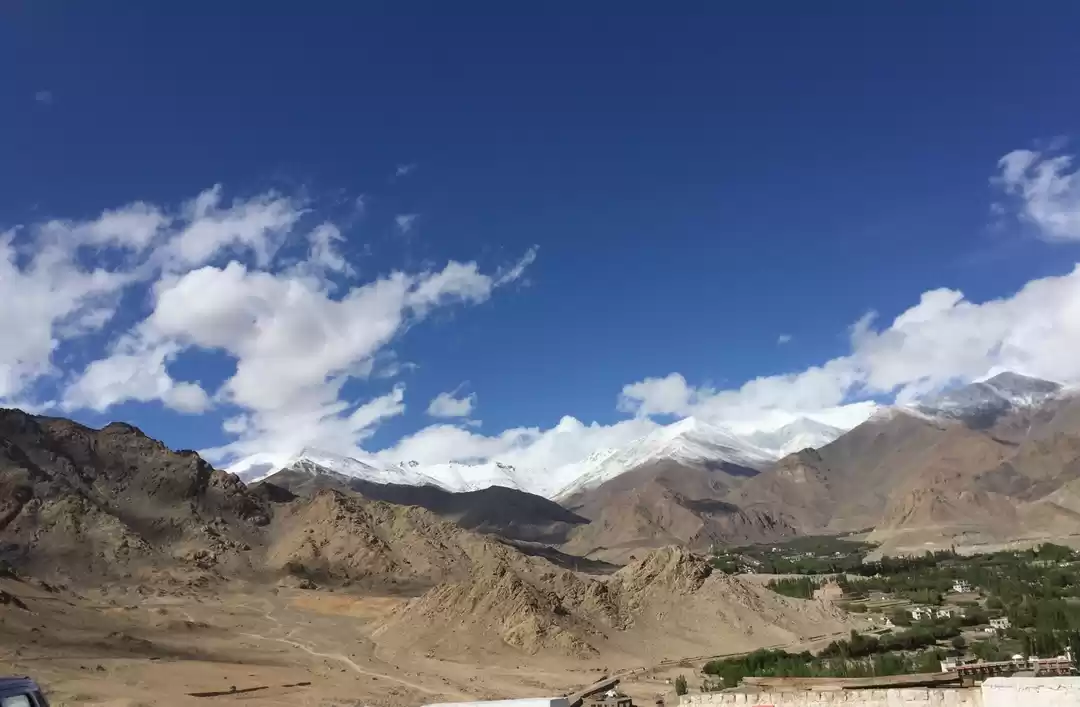
Note: The rest of the photos from this post can be found on my blog.
All you hear about Ladakh tourism is Pangong Lake. Is it really that beautiful? Is it worth the hype?
There are moments in your life when you’ll experience an epiphany. A life changing experience, when you know just what you’re going to do next.
That isn’t what happened to me. I’ve long since come to terms with the fact that even if Sartre descended for a day to help me figure life out, I won’t know what I want to do next. But if it’s going to happen to any of you, it’s highly likely to happen at Pangong tso (lake). For others like me: the visit will leave with you a moment of deep solitude and peace; one that will stay with you every day for the rest of your life. A moment to go back to, to help you get through rough days.

Lazy days by Pangong Tso
The lake, made famous by the movie 3 Idiots attracts many tourists from all over the world. It was my first weekend in Ladakh, and all of us volunteers were equally excited to go check it out, [Read this to know more about what I was doing in Ladakh] especially before the road closes due to the snow. (A statement I heard over and over again from people trying to discourage me from travelling to Ladakh in October which is off-season. Like I said, don’t listen to people).
5 of us set off on this expedition to discover it for ourselves.
Pangong is at a height of 14,000 ft. above sea level and to get there, you go through Chang La pass at 17,000 ft. to get there – the third highest pass in the world. Travelling this route during October infers freezing your butt off. Having packed that morning at 6 a.m. in pitch dark, I carry only my camera, candy, toothbrush, wallet and all the warm clothes I had – not nearly enough. Pangong lake is about 6 hours away from Leh town, about 6.5 hours for us from SECMOL. Our taxi is an Innova and our driver Motup-ji (M:+91-9419177843), a jolly old man who refused to part with his cap.

Chang La, the world’s third highest pass

Fluff at Chang La
The landscape from Leh to Pangong changes dramatically and constantly. If you think orange grass can only be found in Spain, and gigantic boulders only in the Grand Canyon, you aren’t looking close enough. The charm of Ladakh in the Fall is unparalleled; a hidden secret. The boulders lurk high above you, the waters shine all the way down and the grass changes constantly from a bright orange to yellow and then to a red and green.

Sakti village, overseen by the grand mountains
We stop for lunch on our way, at Himalayan Café in the town of Tangste and, since it’s off season, it’s the only restaurant for miles. This is also the town where the driver disappears for a bit to vet the permits for foreigners (Rs. 700 each, and can be secured only in pairs). Sans exaggeration, this place has the best coffee you will ever drink. I do not say this as a coffee-starved person in Ladakh, but take my word for it. The best coffee, and the fluffiest bread omelette.
The rest of the route from here is spattered with more army camps, hilarious B.R.O. (Border Roads Organisation) road signs, horses grazing peacefully in the sun, and no sight of human life. My favourite kind. The scene is something out of a movie. No, seriously. It’s an exact replica of the famous scene in Zindagi Na Milegi Dobara, with the wild horses running past the car. Horses munch away on orange grass; ponds gleam clearer than glass, reflecting the harsh sun and the blankets of snow on the mountains around. There’s a nip in the air, but it’s still not worth closing the windows for. The sight is unreal, and we aren’t even there yet!

The first sighting of Pangong lake is dramatic, preceded by the sight of a gorgeous, enchanting swamp. There’s fine, beach-like sand around now, and the mountains are more barren.

Driving past Pangong Tso
You might not even realise you’ve spotted the lake, unless you have your eyes peeled for purple water.
As we pull up closer, I don’t know what hit me. When we draw a lake as kids, we use one blue crayon for the water, a yellow one for the sun and brown for the mountains. If you witness Pangong Tso for yourself, you’d have to write to Crayola (or Faber Castle, yes) to manufacture about 20 more colours.

Shades of Pangong Tso
Mentally, you can try dividing the colours into different strips, but soon you lose count. There’s blue and green and purple and red blending to form colours you’ve never seen before, and I’m not sure you will again. The lake stretches far beyond your eyes can take you. We later find out that India only holds 30% of Pangong lake. 70% lies on China’s side of the border! Pangong is a rare salt water lake, formed as the sea water got pushed up while the Himalayas were forming.
The first village along Pangong is full of restaurants named after characters from 3 Idiots. Pangmik, the second village is the best one to stay at. We pick Barma Homestay, one of the few that is still open in off season. A small, cosy room for 5 cost us Rs. 600 pa per night, including dinner, breakfast and tea.
We’re in time for sunset at Pangong lake. Don’t make the “tourist”mistake of making a day trip to this place. We cross paths with a solo traveller who had planned on returning, but simply couldn’t get himself to leave this evening as planned.

View from Barma homestay
The experience of sitting on the banks of this lake – the water splashing up, the tiny pebbles crunching under my feet just enough to add to the music, and the sun slowly sneaking down behind the brown mountains, casting a perfect reflection onto the multitude of blue below it – is exhilarating. My writing flows even as my hands freeze. The mountains are perfectly reflected onto the water. The setting sun gives them the illusion of floating on water.
Seeing such beauty will do something to you. It inspires you to write, to feel the music playing through your headphones, to see the beauty in the words you’re reading. I wrote 7 letters, heard out my entire playlist, read until the light was out and simply lay there in the freezing cold refusing to let go of the moment. A herd of sheep passes and a blur of white reflects onto the water amidst the clear black silhouettes of the trees. The stars begin to twinkle We retire to a delicious home meal of dal, steaming rice, mixed vegetables and hot cinnamon tea. Lots of it.

Writing by the lake
We then venture out to try night photography for the first time. It wasn’t as successful as later in the trip (More on that later) but here’s my very first photo attempt of capturing the Milky Way.

The galaxy above
You run out of wishes to make on the numerous shooting stars. A deep feeling of content sets in. And cold too, inevitably.
The night is windy and freezing, about -5°C, the water slight wavy. On a still night, you can see the reflection of the sky, with a million stars beaming up from the water. It snows on the mountains on tonight, and on our way back, the same clear white mountains we had passed just yesterday are shrouded in a blue haze. We sit up late into the night, talking about what brought us there, about life and drugs, the students, Kung Fu Panda and our plans (or lack of) once we got back to reality. The laughter rings through the quiet night.

A fresh bout of snow
6 a.m. Sunrise. A surreal experience. The water is clear at first, then a turquoise, a sea blue and finally navy blue. As I meditate over the hour, the sun rises and with every other wave, the water changes its colours in front of you. It’s breathtaking.

Pebbles at Sunrise
Back at the guesthouse, everyone is up and we spread out to read and warm up with cinnamon tea. Bread omelette is served up with toast and jam.
We then visit Shooting Point. This is the spot where the famous last scene of 3 Idiots was shot.

Shooting point at Pangong
Here’s why you should never come to Ladakh in off season. Who wants to be stranded by a mesmerising lake all by themselves, right? Hear nothing but the sounds of sea gulls, enjoying a sunny day out on the lake, and the occasional wave breaking against your feet.
Don’t get me wrong. Off season travel meant that the travel agent we were relying on shut shop and left without telling us, and sure, the cold can get under your skin. But if you take the chance and wander in these parts around Fall, you can actually feel the colours seeping over you, as you sit and ponder what you must have done right to even get here.

Reflections
We lie there for hours. Each of us pick a different spot, from where we see a whole different view of the same lake and the same snow capped mountains watching over, puzzled at us. After a while, even the sea gulls warm up and move in closer. My book,Notes To Myself, takes on a different meaning.

Serenity. I cannot help but feel slightly stunned by the beauty of the sheep, goats, donkeys and horses grazing in the orange grass in the bright sun with dizzying, winding water streams all around. With every passing moment, I wonder why I booked a return ticket. It reminds me of my favourite line by Pico Iyer, “Travel allows you to bring stillness into the motion and commotion of the world” (The Art of Stillness).

More stories and photos can be found on my blog: Walk to Wonderland, Facebook, Instagram and Twitter.

























